1. Computational and Resource Bottlenecks in Traditional Frameworks
Traditional blockchain technology, represented by Bitcoin and Ethereum, has achieved significant accomplishments in decentralization, transparency, and security, driving the development of cryptographic technologies and applications. However, due to the "Blockchain Trilemma" (Figure 1-1), there are evident bottlenecks in computational performance and resource utilization, hindering technological innovation and application development, and posing challenges to the crypto industry.
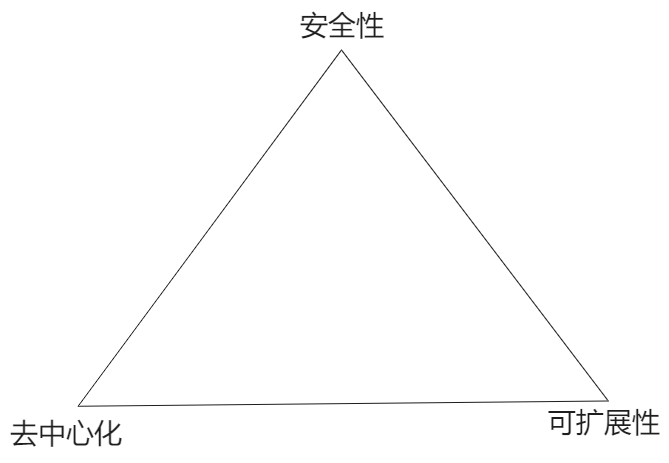
Figure 1-1. Blockchain Trilemma
First, let’s analyze the three elements of the "Blockchain Trilemma":
Security: Security essentially reflects the consensus requirements, specifically in ensuring the consistency, integrity, tamper-resistance, traceability, and verifiability of block data. Meeting these characteristics allows blockchain to establish a strong trust security mechanism that operates "without trust." Therefore, the security of consensus is the primary demand of blockchain and the cornerstone of its development.
Decentralization: Decentralization means that there is no single point of control in the system; power and control are distributed across multiple nodes, which can enhance the system's fault tolerance, censorship resistance, and security, preventing single points of failure and malicious manipulation. While distributed systems are not necessarily decentralized (for example, a distributed system controlled by a single entity is not decentralized), decentralized systems are always distributed.
Scalability: In the context of the "Blockchain Trilemma," scalability refers to the ability of a distributed system to expand its computational performance. For digital systems, everything is computation, and different applications have varying computational performance requirements. Broadly speaking, scalability refers to the system's ability to handle the growing volume of data, transactions, and users, which is reflected not only in TPS (transactions per second) but also in storage capacity, network bandwidth, and the number of nodes. High scalability is essential to support large-scale applications and user growth. The scalability of distributed systems directly impacts the innovation and scaling of decentralized applications (DApps) built on them.
Among these three elements, blockchain emphasizes decentralization, strengthens verification and consensus security, while being relatively weak in computational performance. This creates the Blockchain Trilemma: when the demands for decentralization and consensus security are met, the scalability of computation is limited, as exemplified by Bitcoin. This means that within such a system framework, the distributed nature of blockchain struggles to support application innovations that require high computational performance or cannot meet the scaling needs of applications, such as AI big data models, graphic rendering, on-chain games, and large-scale social interactions.
The above primarily analyzes the computational performance expansion challenges posed by the Blockchain Trilemma. Where does the root of this problem lie? Next, we will explore the interrelationships among the elements within a block, starting from the block formation process.
In blockchain technology, a "block" refers to a dataset formed by packaging a series of verified transaction data within a specific time interval. This concept includes the following key elements and their interrelationships:
Consensus (Data): Verified transaction data with state consistency, i.e., the consensus data formed within the block.
Block Space: Refers to the storage space for transaction data. The number of transactions that can be stored is limited by the block size (set by the system or constrained by the total Gas fee of the block), meaning that the on-chain storage space is a limited resource, which in turn affects the scalability of applications.
Computational Performance: The number of transactions packed divided by the block time gives the number of transactions processed per second, i.e., TPS (transactions per second) = Number of transactions in the block / Block time. Computational performance is correlated with the consensus process and storage space.
From the above analysis, it is evident that the three elements of consensus, storage space, and computational performance within a block are interrelated, forming a constraining relationship. While blockchain pursues consistent consensus, it not only constrains the scalability of individual block storage space but also limits the scalability of computational performance. This is the root cause of the Blockchain Trilemma.
Further analysis indicates that during the block formation process, the blockchain system constructs three types of global, system-level resources: data (consensus) resources, storage resources, and computational resources. However, the Trilemma limits the function and scalability of these three resources, creating resource bottlenecks that hinder their potential from being fully realized. If there were a way to break this constraint, would it lead to a new resource-driven development landscape for blockchain?
This is the core question of this article, aiming to find an answer. Research shows that from the SCP paradigm, the hyper-parallel computing model Actor, to the SSI distributed system architecture, a complete technical chain has been formed in the engineering practice of AO + Arweave, breaking the Blockchain Trilemma and fully releasing the resource potential of blockchain and distributed systems, thus providing empowerment in practice and opening a new development path for value creation and large-scale applications in Web3.
2. SCP: Breaking the Bottlenecks of Computational Performance and Resource Expansion
2.1. Breaking the Blockchain Trilemma Based on SCP
AO (Hyper-Parallel Computing Network) is an engineering application built on Arweave that realizes the Storage-based Consensus Paradigm (SCP). As shown in the figure below:
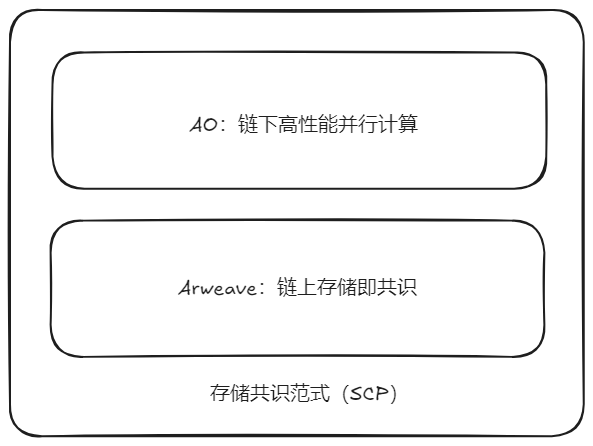
Figure 2-1. AO + Arweave Modular System Architecture Based on SCP
Based on the core concept of SCP, the AO + Arweave system architecture achieves effective separation of on-chain storage (consensus) and off-chain computation:
Storage Layer: The storage resources provided by Arweave are responsible for the permanent storage of data, while blockchain technology ensures the traceability and immutability of on-chain data, achieving data consistency and high availability, reflecting the concept of "storage as consensus."
Computational Layer: Computational tasks are migrated off-chain and decoupled from the storage (consensus) layer. This design allows computational performance to be free from direct constraints of on-chain consensus, enabling infinite scalability by increasing off-chain computing nodes, significantly enhancing processing efficiency and system flexibility.
Comprehensive Effect: Arweave's storage public chain maintains the decentralization of the system and the consensus security of data, while AO ensures the infinite scalability of computational performance off-chain. This structure ensures that the entire AO + Arweave system meets the demands for decentralization, consensus security, and computational performance scalability, effectively addressing the challenges of the Blockchain Trilemma.
2.2. Constructing Three Types of Global System-Level Resources
The features realized based on SCP play an important role in the practical application of the system, allowing storage, computation, and data (consensus) to become interrelated yet independently functioning system elements, forming global, system-level resources, as shown in Figure 2-2:
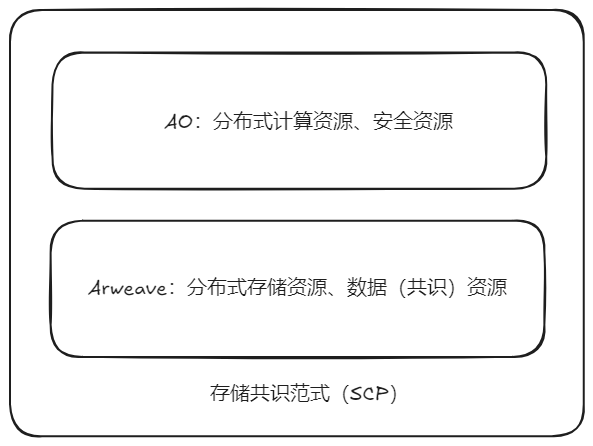
Figure 2-2. Global System-Level Resources in the AO Network
Storage Space Resources: As a storage public chain, Arweave's storage space expansion is not limited by block size or total Gas fees, but is entirely determined by storage demand, achieving true infinite scalability. This not only meets the system's need for flexible storage space but also enriches the diversity of on-chain data types, providing more possibilities for innovation in on-chain native applications.
Computational Resources: The AO computing network consists of MU, SU, and CU, with CU being the unit responsible for computation, which can horizontally scale to form CU clusters. These clusters compete for computational rights, supporting different processes to run in parallel across different CUs. This design of scalability and parallelism allows AO to provide infinite computational node resources, supporting high-performance parallel computing.
Data (Consensus) Resources: On Arweave, any type and size of data can be permanently stored in the form of "atomic assets," such as NFTs, documents, images, audio and video, web pages, games, legal contracts, program code, etc. This data forms a tamper-proof massive database, providing a foundation for data monetization and circulation. Meanwhile, AO does not reach consensus on the state of computation itself but focuses on ensuring that interaction logs are written to Arweave, ensuring the persistent availability and integrity of data, and ensuring the consistency and verifiability of computational output results. Any type of data can be referenced without permission or trust, enabling new value creation.
Security Resources: In fact, during the operation of AO, security resources supported by the protocol token $AO are also constructed, but this is not directly related to SCP; it involves the operation and security mechanisms of AO network communication units, which will be analyzed in detail in Section 3, "Customizable Security and Security Resources."
2.3. Trustworthy Computing Based on Storage Consensus
Utilizing the above system-level resources and distributed characteristics, AO is built on the Arweave storage public chain, forming a cloud computing network. Similar to traditional Web2 cloud computing, AO theoretically possesses unlimited computational and storage resource capabilities, capable of supporting vast data resources. However, AO's uniqueness lies in its establishment of a decentralized, globally consistent consensus trustworthy computing platform based on the storage consensus paradigm.
First, Arweave provides a permissionless, permanent storage service for global users, constructing a consensus data foundation that does not rely on trust.
Second, AO stores the source code of various applications on the Arweave chain, which can be downloaded and run locally; its input comes from trustworthy data on the chain, ensuring the consistency and predictability of output results under fixed inputs and execution logic.
Finally, any client can perform consistency verification, as under the same input parameters and execution logic, the computational output results must be consistent, thereby ensuring trustworthiness.
Thus, it can be seen that with determinism in source programs, inputs, and outputs, AO has constructed a trustworthy computing system based on storage consensus.
The Storage-based Consensus Paradigm differs from conventional node consensus systems; in the Storage-based Consensus Paradigm, computation, verification, and consensus are all conducted off-chain, with the final consensus data submitted on-chain for storage, forming the system's availability layer, consensus layer, and settlement layer. In other words, with the support of SCP, computational performance is no longer constrained by consensus and can be infinitely expanded off-chain. This mechanism provides the feasibility for the AO network to create a high-parallel and distributed architecture that supports high-performance computing.
So, how has AO evolved into a decentralized world computer with distributed deployment and high parallel operation? This is primarily due to the Actor model, network communication units, and the distributed architecture implemented based on SSI.
3. Hyper-Parallel: Actor Model and Network Communication Units
3.1. Defining the Basic Framework for Parallel Computing with the Actor Model
The name of the AO network comes from "Actor Oriented," indicating that it is a hyper-parallel computing network. This designation stems from the core use of the Actor model, which establishes the foundational structure for parallel computation within the system.
In the Actor model, an "actor" is the basic unit of parallel computation, consisting of three main elements: State, Behavior, and Mailbox. These three elements and their interactions form the core concept of the Actor model, as shown in Figure 3-1:
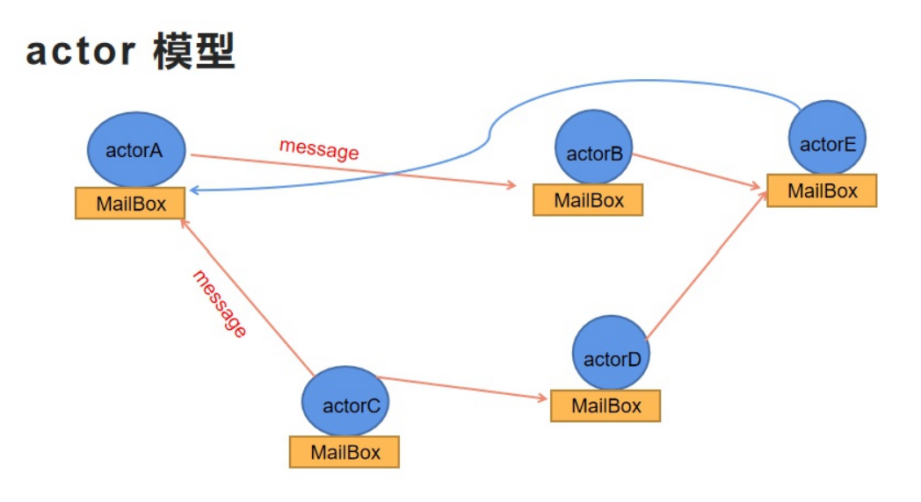
Figure 3-1. Actor Model Diagram (Image Source: Reference Material 5)
This model defines the core components of the system and the rules of interaction. An actor can be viewed as an independent, concurrently active entity that can receive messages, process messages, send messages, and dynamically create new actors. The model has the following characteristics:
Asynchronous Communication: Multiple actors send uniformly formatted messages to each other in a point-to-point manner, with message sending and processing occurring asynchronously. This communication method naturally adapts to interactions between nodes in distributed systems.
Parallel Operation: Each actor is independent and does not share state, so there is no concern that the state of other actors will affect its own. Each actor can independently handle its tasks, achieving true parallel operation.
Distributed Deployment: Actors can be deployed and scheduled across different CPUs, nodes, or even different time slices without affecting the final results.
Scalability: Due to its distributed nature and loosely coupled design, the Actor model can flexibly scale horizontally by adding nodes and dynamically balancing loads.
In summary, the Actor model optimizes parallel and concurrent issues with its elegant handling mechanism, making it particularly suitable for building distributed systems and high-concurrency applications. The AO network adopts the Actor model as the architectural foundation for parallel computing, thereby achieving efficient asynchronous communication, parallel operation, distributed deployment, and excellent scalability.
3.2. Efficient Parallel Computing Implementation of Communication Network Units
The Actor model provides the framework for parallel computing, while the communication network units of AO embody the practical implementation of this model. These network units include Message Units (MU), Scheduling Units (SU), and Computing Units (CU), with each unit being an independent "actor" that collaborates and synchronizes through uniformly formatted messages (ANS-104). Figure 3-2 illustrates the basic functions and message interaction processes of these network units.
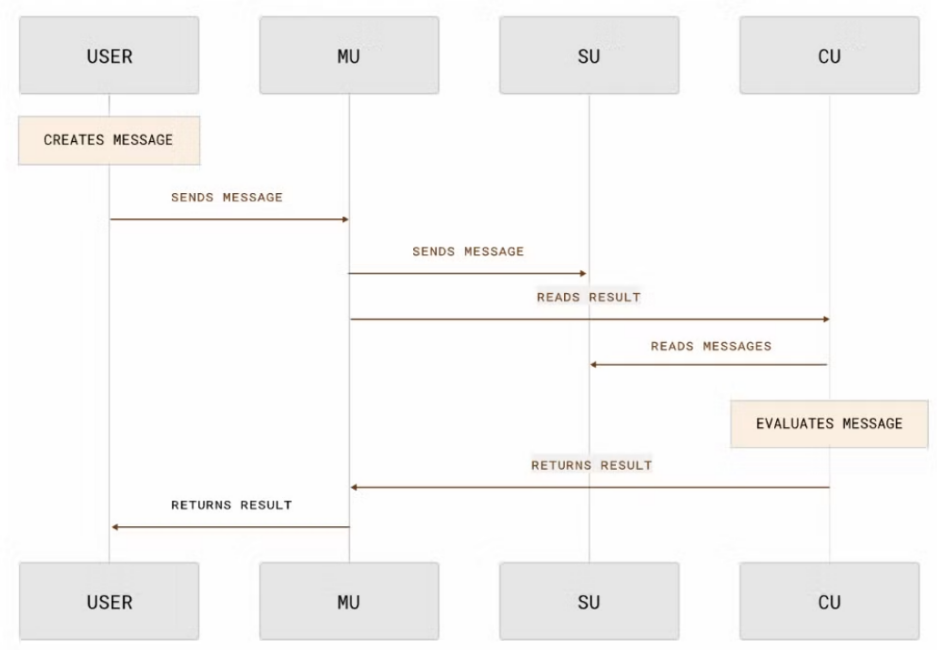
Figure 3-2. Working Principle of AO Network Communication Units (Image Source: AO White Paper)
In the AO network, starting an application triggers the launch of one or more processes, with the system allocating resources such as memory, virtual machines, and communication network units for each process. Inter-process interactions are entirely completed through messages. First, messages from users or other processes are sent to MU, which then forwards the messages to SU for sorting. The sorted messages and their results are permanently stored on Arweave, and the state computation is performed by a CU from a competing CU cluster, meaning that processes can run on any computing node, showcasing typical decentralized parallel computing characteristics. After computation is completed, the CU returns the results to SU in the form of a signed certificate to ensure the accuracy and verifiability of the computation results, which are ultimately uploaded to Arweave by SU. The complete dataset formed by each process—including the initial state, processing steps, and final results—will be permanently stored on Arweave, becoming consensus data available for others to retrieve, verify, and use.
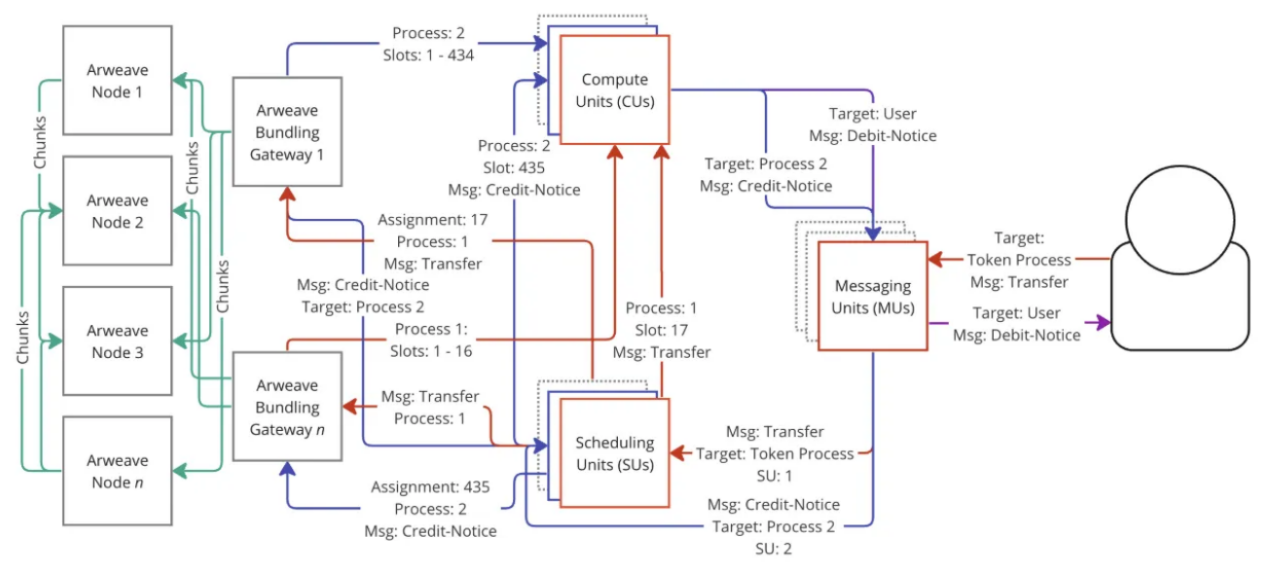
Figure 3-3. Communication Process Between Units in Token Transfer (Image Source: AO White Paper)
Figure 3-3 illustrates a specific application scenario of the AO network processing Token transfer requests, clearly depicting the composition and communication processes of each modular network unit, as well as the distributed storage mechanism formed through interaction with Arweave.
The AO system comprehensively utilizes computational resources (distributed CU clusters), storage resources (distributed Arweave nodes), and data resources (long-term available data stored in Arweave), laying the foundation for AO to become a global computing platform. Built on the Actor model, AO's computing network not only possesses the characteristics of asynchronous communication, parallel operation, and distributed deployment but also boasts exceptional scalability, making it a truly decentralized, distributed, and parallel operating computing network.
3.3. Customizable Security and Security Resources
In the previous section, we explored the composition and working principles of the AO network communication units. In this section, we will delve into the security of this network, which is closely tied to the native token $AO of the AO protocol. This analysis will echo the content of Section 2.2 on "Security Resources," focusing on the customizable security and security resources within the AO network.
The network communication units composed of MU, SU, and CU are the core components of the AO computing network, establishing the operational mechanism of a decentralized world computer and forming three types of system-level resources: computation, storage, and data. This serves as the foundation for the technical model and resource model within the AO network. Based on these models, the AO system creates a demand-driven customizable security mechanism. This is an economic model built on the protocol's native token $AO, where security is ensured through economic game theory, thus providing a security market within AO.
To facilitate understanding, the security mechanism in AO can be simplified from the user's perspective into several core elements and their interrelationships: customization needs, security/economic resources, security mechanisms, and security competition markets.
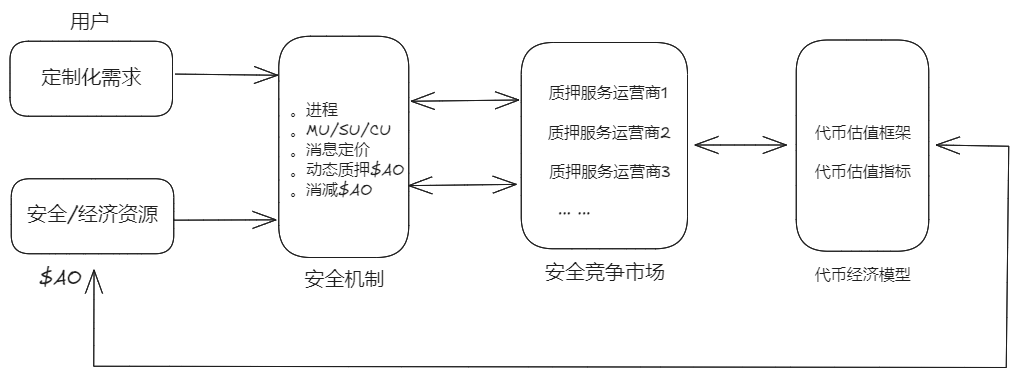
Figure 3-4. Relationships Between Elements in the AO Network Security Mechanism
Figure 3-4 describes the interrelationships among the elements in the AO network security mechanism:
Customization Needs: As a super parallel computing platform, various nodes in AO independently and concurrently run different processes, handling different types of data. These varying data transaction scenarios have different requirements for system latency, cost, and efficiency, necessitating that AO's security model possesses flexibility to customize security strategies based on needs. Users can customize the specific security level required for each message, thereby driving the customization and effective allocation of security resources.
Security/Economic Resources: $AO is the native token of the protocol, serving as a circulating public value unit and economic resource that supports all security mechanisms in the AO network through its economic game theory.
Security Mechanism: In various processes of AO, including nodes like MU, SU, and CU, $AO must be staked to participate in the security mechanism. By staking economic value, the system manages funds and enforces penalties according to rules to prevent malicious behavior. For example, if MU signs an invalid message or CU provides an invalid signature proof, the system will reduce its staked assets.
Security Competition Market: Since security is purchased per message, different messages correspond to different staking requirements, creating a dynamic competition market. The price of security is determined by market supply and demand rather than fixed network rules. This market competition mechanism promotes effective pricing and allocation of security resources, providing tailored security.
In summary, the decentralized peer-to-peer market structure of the AO network essentially allows nodes to independently set the fees for their message delivery services, accommodating the varying security level needs of different data transactions and reflecting the system's efficiency in responding to specific security demands. This flexibility enables it to dynamically adapt to changes in market demand and supply, fostering competition and enhancing response efficiency, thus achieving an efficient equilibrium in the market.
The liquidity of $AO, as a tool for economic game theory, establishes a comprehensive and real-time token valuation framework while building the security mechanism, providing a solid foundation for effective token valuation. A well-structured $AO token economic model with a complete valuation framework and indicators will undoubtedly further enhance the security of the AO network.
4. SSI: A Unified Experience Distributed System Architecture
In previous discussions, we have outlined the basic framework for parallel computing provided by the Actor model and how the network communication units composed of MU, SU, and CU specifically implement this model. These communication units are deployed across different heterogeneous nodes in a distributed network, allowing process execution to be unrestricted by specific physical locations and enabling seamless user interactions through the network. All of this collectively forms a unified computing environment, achieving a Single System Image (SSI), which is the foundation for the AO network's ability to support countless processes. This section will explore the definition of SSI and its specific role in AO.
Single System Image (SSI) is a core concept in distributed computing that integrates physically separated heterogeneous computing resources into a unified resource pool through virtualization technology. This integration not only enhances the abstraction level of the system but also significantly optimizes the user experience. Under the influence of SSI, although the system may consist of multiple servers, distributed databases, or various networks, users perceive it as operating a single computer.
Typically, the SSI structure includes a user layer, a unified interface, a resource management layer, computing nodes, and a storage layer, as illustrated in Figure 4-1.
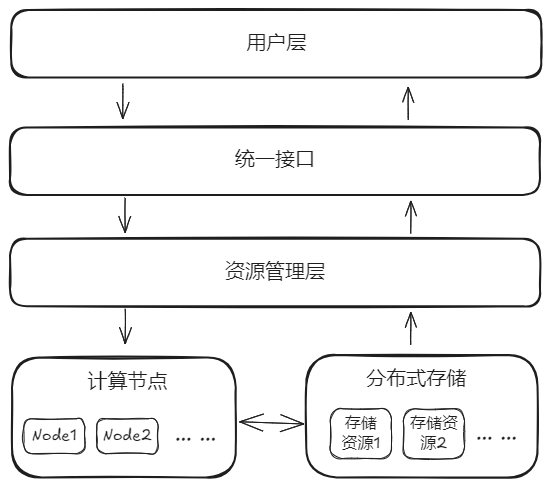
Figure 4-1. SSI Structure Diagram
Users interact with the SSI system at the user layer through a client or web front end. The unified interface is responsible for receiving user requests and distributing them to the resource management layer. The resource management layer schedules the distributed computing nodes and storage resources to execute parallel computing tasks or perform data read and write operations.
SSI provides a feasible solution to the current issue of multiple chains coexisting in public chains. For example, the Ethereum ecosystem, due to its rapid development, faces congestion, low efficiency, and high cost issues, while Layer 2, as the main solution to these scalability problems, introduces new challenges. Each Layer 2 chain, while redundantly building infrastructure, also leads to fragmented liquidity and cross-chain asset risks, increasing the complexity and participation threshold for users switching between chains, severely impacting user experience and the scalable development of applications.
Public chains like Solana and Polkadot have recognized these issues and made adjustments based on their existing architectures. However, AO adopted the distributed architecture of SSI from the very beginning, demonstrating foresight and vision.
Utilizing the Actor model, AO's network communication units are hosted on a heterogeneous node cluster within a distributed network, with these nodes potentially spread across various regions globally, including servers of different types and functions. The AO computing network, based on the Actor model, is a decentralized distributed network that requires a unified architecture for integration to provide consistent availability and user experience.
When a user initiates an AO process through the front end, the system configures the necessary different resources to handle tasks such as message passing, transaction sorting, and state computation. For users, the underlying complex distributed architecture is abstracted, making even a large cluster of nodes appear as a single computer. This is because the AO system uses SSI to integrate the complex components of distributed systems, achieving a unified computing environment through modularization. In other words, through the SSI architecture, AO integrates multiple distributed computing nodes into a unified resource, providing users with a transparent, efficient, scalable, and unified computing platform.
5. Resource-Driven Value Creation and Application Innovation
In summary, through the combination of SCP, Actor, and SSI, AO has built an innovative architecture that creates three scalable system-level resources for computation, storage, and data (consensus), as well as a security resource supported by $AO. Resources, as core production factors, play a key role in driving technological advancement, stimulating application innovation, and improving economic efficiency. By clarifying the resource elements in the AO + Arweave system, we can optimize resource planning and management, leverage resources to drive technological and application innovation, accelerate value creation in Web3, and promote the growth of the crypto economy.
Here, we provide a summary:
1. Infrastructure Value Creation
Decentralized World Computer: AO integrates scalable computing, storage, and data resources, providing a unified decentralized computing platform for all applications, characterized by verifiability and trust minimization. Applications can focus solely on business innovation, avoiding redundant efforts, making AO a public infrastructure for application innovation.
On-chain Shared Data Resource Library: Arweave can permanently store almost all types of data, becoming an everlasting "Library of Alexandria." Whether financial data or non-financial data, its immutable and verifiable characteristics make it a public good that can provide consensus value, supporting combinatorial innovation.
Customizable Security Facilities: AO can provide customized security mechanisms for clients and applications based on different data types and values, achieving a balance between security, cost, and efficiency.
Bridge Between Web2 and Web3: AO operates off-chain and can seamlessly integrate with on-chain and off-chain systems, serving as a bridge between Web2 and Web3. Any Web2 application can initiate processes in AO through APIs and messaging mechanisms, invoking network units in AO to perform computations while customizing their security mechanisms.
2. Technological and Application Innovation
To date, blockchain development, led by public chains such as Bitcoin, Ethereum, and Solana, has primarily focused on the financial sector, including asset issuance, trading, collateral lending, and derivatives, leading many to mistakenly believe that the role of blockchain is limited to this.
However, the innovative architecture of AO + Arweave adds new feasibility for technological innovation and application development in blockchain. In addition to supporting the financial innovations typical of most public chains, AO, as a universal world computer, supports all types of data and corresponding application innovations, particularly those driven by non-financial data.
Loading AI Models: The AO + Arweave architecture provides unlimited computing, storage, and data resources. With the support of three key technologies—WASM64, WeaveDrive, and Llama.cpp large language model inference engine—AO can directly run various open-source large language models, such as Llama 3 and GPT-2, within smart contracts, enabling smart contracts to directly handle complex data and make concurrent decisions, such as the on-chain autonomous virtual world Llama Land powered by the AI-driven Llama 3 model.
Creating Agents and AgentFi: Based on the reasoning capabilities of AI models, as well as AO processes' ability to respond to implicit messages over time, awaken themselves, and execute actions, and the ability to "subscribe" to a process by paying fees to MU to trigger computations at appropriate frequencies, AO supports Agents and AgentFi that can meet complex business logic, predefined needs, and diversified autonomous strategies.
Copyright Management and Creator Market (ContentFi): Arweave stores various types of data in the form of atomic assets, making data easy to identify and confirm ownership, which can be monetized as a new form of digital asset. Through circulation and trading in the market, price discovery can be achieved, establishing clear benefit distribution and collaboration models to support copyright management and creator markets.
Next-Generation Internet Framework Permaweb: Unlike the three-layer structure of application layer, service layer, and storage layer in traditional Web2 internet, Permaweb replaces the storage layer with Arweave's permanent storage solution, achieving permanent storage of all content, stored in Arweave as atomic assets. Based on SCP, it builds various applications supporting AO's hyper-parallel computing at the application layer, creating a perpetually online, decentralized next-generation internet framework. Although this framework integrates with Web2 and offers a similar experience, there are significant differences; Permaweb is not a "walled garden." It provides a fair and open environment for developers, operators, and users: users own and control their data; data can flow freely between different applications; developers and operators can utilize data to conduct business without special permissions within established rules, thus promoting mutual benefits among all parties.
The above are several typical application innovation directions supported by AO. Of course, AO can support more data types and broader application innovation scenarios. Although the AO ecosystem is still in its early stages of development, and technological and application innovations require time for validation, we prefer to assess the significance and value of these innovations from the perspective of the overall development stage of the Web3 industry and the characteristics of Web2 systems.
Currently, the Web3 industry is exploring feasible paths for large-scale adoption, with many blockchains striving for this, such as the combination of TON and Telegram, guiding real Web2 users to real Web3 applications, intending to achieve large-scale value conversion from traffic to liquidity; CKB becoming an L2 for Bitcoin, building a lightning network based on CKB, aiming to bring high-frequency, small-amount, large-scale peer-to-peer payments.
From the perspective of industry development, AO + Arweave redefines the implementation framework of decentralized computers, bringing system flexibility, security, and economic efficiency through innovative architecture, constructing scalable system-level resources, sustainably releasing resource potential, driving technological and application innovation, achieving value creation and transfer, promoting the integration of Web3 and Web2, and providing a feasible path for large-scale adoption of Web3.
References
Avi: A Protocol for Economically Sustainable Permanent Information Preservation
AO Protocol: Decentralized, Permissionless Supercomputer:
https://x.com/kylewmi/status/1802131298724811108
- Storage-Based Computing Paradigm Enabled by Arweave:
https://news.ever.vision/a-storage-based-computation-paradigm-enabled-by-arweave-de799ae8c424
- Technical Explanation of AO Hyper-Parallel Computer:
https://www.chaincatcher.com/article/2121544
- Interpreting SCP: A Trustless Infrastructure Paradigm Beyond Rollup:
https://mp.weixin.qq.com/s/BPRAsby78G2a835pX1l3iw
- In-Depth Analysis of the Actor Model (I): Introduction to Actors and Their Applications in the Gaming Industry:
https://blog.csdn.net/weixin_44505163/article/details/121191182
- Arweave Permanent Storage + AO Hyper-Parallel Computer: Building Data Consensus Infrastructure:
https://www.chaincatcher.com/article/2141924
免责声明:本文章仅代表作者个人观点,不代表本平台的立场和观点。本文章仅供信息分享,不构成对任何人的任何投资建议。用户与作者之间的任何争议,与本平台无关。如网页中刊载的文章或图片涉及侵权,请提供相关的权利证明和身份证明发送邮件到support@aicoin.com,本平台相关工作人员将会进行核查。




